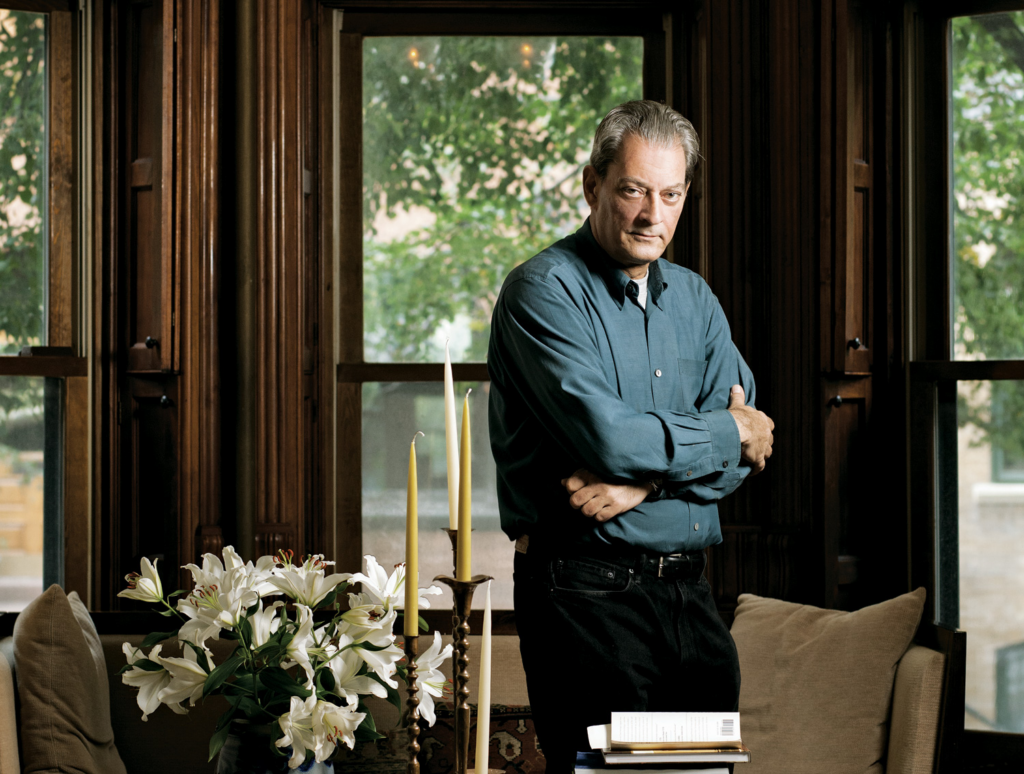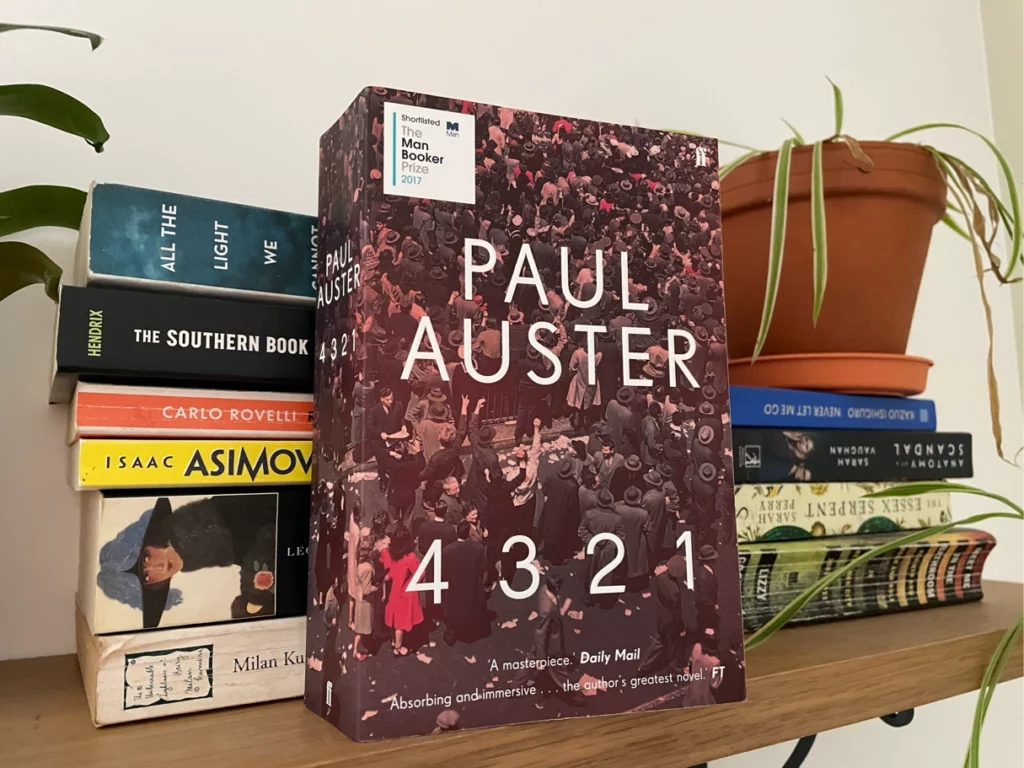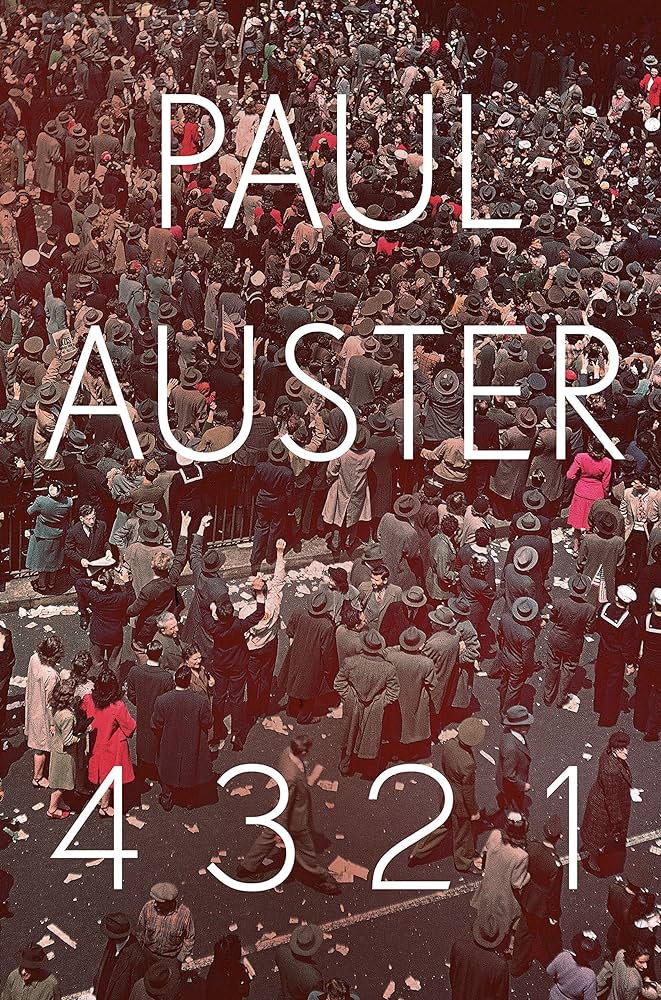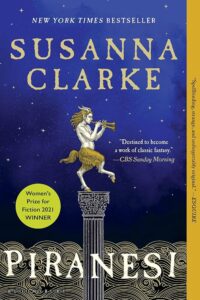Embarking on Paul Auster’s 4 3 2 1 feels like stepping into a kaleidoscope of lives, each twist and turn revealing a new pattern, a new possibility of existence for its protagonist, Archie Ferguson. This novel, a colossal undertaking by Auster, dives into the heart of what makes us human: the choices we make, the chances we take, and the myriad ways our lives could unfold based on those decisions.

Auster presents us with four distinct narratives of Ferguson’s life, each one branching out from the same starting point but diverging wildly as circumstances, decisions, and fate intervene. It’s a bold narrative strategy that not only showcases Auster’s storytelling prowess but also his deep engagement with the themes of identity, family, love, loss, and the inexorable march of time.
Set against the vibrant and tumultuous backdrop of mid-20th century America, Auster meticulously reconstructs the era’s defining moments through the lens of Ferguson’s lives. From the gritty streets of Newark to the bustling energy of New York City, from the political upheaval in Paris to the swinging culture of London, Auster paints a vivid picture of the world that shaped Ferguson. The historical events—the Vietnam War, the Civil Rights movement, the Kennedy assassination—are not mere backdrops but active elements that influence the direction of Ferguson’s life in each iteration.
Auster’s exploration of the ‘what if’ scenarios is not just an intellectual exercise but a deeply emotional journey. Through the triumphs and tragedies of Ferguson’s lives, we’re compelled to reflect on our own choices and the sheer randomness of life. The narrative is imbued with a sense of nostalgia and longing, a tender rumination on the paths not taken and the lives not lived.

The prose in 4 3 2 1 is both rich and expansive, capable of capturing the minutiae of Ferguson’s everyday experiences and the monumental moments that define his existence. Auster’s skill in creating four compelling, intertwined narratives that remain distinct yet echo each other is nothing short of masterful. This complexity is balanced by the emotional depth of the characters, particularly Ferguson, who, in all his incarnations, remains a figure of intense empathy and fascination.
Reading 4 3 2 1 is a commitment—a journey that demands patience and attention from its readers. The novel’s length and narrative density might seem daunting, but the reward is a profoundly immersive experience. Auster offers not just a story, but a meditation on life itself, on the art of storytelling, and on the endless possibilities that define the human experience.
The novel is a testament to Auster’s belief in the power of literature to explore and illuminate the complexities of life and identity. It challenges readers to consider the impact of even the smallest decisions, the moments that might seem inconsequential but can lead to vastly different outcomes. Auster’s narrative is a reminder that our lives are the sum of our choices, our experiences, and the stories we tell about ourselves.
In crafting 4 3 2 1, Auster has not only written a novel but has also created a space for reflection—a mirror that reflects the myriad ways we navigate our existence. The book is a celebration of the human spirit, of the resilience and creativity that define us. It’s a narrative that resonates with the vibrancy of life, with its pains and pleasures, its uncertainties, and its undeniable beauty.
For anyone who cherishes stories that delve into the heart of what it means to live, to choose, and to love, 4 3 2 1 is an indelible work of art. It’s a book that doesn’t just tell a story but invites you into its world, asking you to ponder the endless “what ifs” of your own life. Auster has crafted not just a masterpiece of literature but a profound exploration of the human condition—a novel that lingers in the mind and heart long after the last page is turned.









